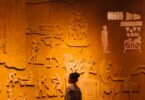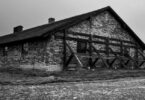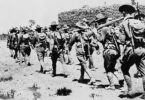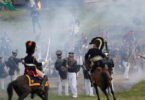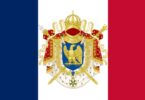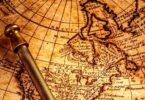Indian Kings and Queens Dynasties History Quiz:
The drama, composed by Harshavardhan
(a) Harshacharit
(b) Kadambari
(c) Ratnavali
(d) Daskumar Chant
What was the capital of Shivaji’s Kingdom?
(a) Pune
(b) Raigarh
(c) Karwar
(d) Purandhar
Who founded the Gupta empire?
(a) Chandragupta-II
(b) Kumargupta
(c) Chandragupta-I
(d) Srigupta
Which ruling dynasties have yet to be mentioned in the Sangam literature?
(a) Chola
(b) Chera
(c) Pandya
(d) Kadamba
The last King of the Maurya Dynasty was
(a) Brihdarth
(b) Kunal
(c) Samprati
(d) Salishuk
Related: quiz on French Revolution
Examples of Vijayanagar art can be found at
(a) Somnath
(b) Hampi
(c) Amaravati
(d) Pattadakal
Shivaji founded the Maratha kingdom by annexing the territories of
(a) Bijapur
(b) Mughals
(c) Both Bijapur and Mughals
(d) Bijapur, Golcunda and the Mughals
Chanakya was known by the name—
(a) Samudragupta
(b) Vishnugupta
(c) Shrigupta
Shivaji crowned himself as King in the year
(a) 1664
(b) 1674
(c) 1670
(d) 1660
Who was the son of Chandragupta Maurya?
(a) Bindusara
(b) Ashoka
(c) Bimbisara
(d) Chandragupta-I
Related: Age questions
Who came to India first during the reign of Harshavardhan?
(a) Fahein
(b) HuengTsang
(c) Lord Dathousie
(d) Taylor
Where was the capital of Pallavas?
(a) Madras
(b) Madurai
(c) Kanchipuram
(d) Tanjore
The capital of Harsha’s empire was.
(a) Ujjain
(b) Kannauj
(c) Thanesar
(d) Prayag
Who founded the Hindu Shahi dynasty of Punjab?
(a) Vasumitra
(b) Kallar
(c) Jayapala
(d) Mahipala
Which rulers built the cave temples of Elephanta?
(a) Vijayanagar
(b) Rashtrakutas
(c) Kushanas
(d) Peshwas
Related: Egyptian History Quiz
The pillar of whose King is situated in Sarnath?
(a) Samundra Gupta
(b) Ashoka
(c) Maharana Pratap
(d) Chandragupta
The Maratha dominion of Shivaji was known as
(a) Swaraj
(b) Mulk-i-qadim
(c) Maharajya
(d) Maratha Rastra
The Jat king of Bharatpur, who is known as the ‘Plato of the Jat tribe’ and the ‘Jat Ulysses’ was
(a) Churaman
(b) Gokula
(c) Badan Singh
(d) Suraj Mal
During his time in the Gupta empire, which of these is a famous play that the Gupta poet Kalidasa wrote?
(a) Mohenjo-Daro
(b) Shakuntala
(c) Kshatriya
(d) Ramayana
Ashoka was related to:
(a) Haryak dynasty
(b) Mauryan dynasty
(c) Gupta dynasty
Related: Quiz On Ottoman Empire
The last Hindu King who partly succeeded in establishing ‘Hindu Swaraj’ was
(a) Chhatrapati Shivaji
(b) Rana Pratap
(c) Chandragupta Maurya
(d) Rana Sanga
Shivaji started his public career at the age of
(a) 18
(b) 21
(c) 23
(d) 24
The main capital in Sarnath was under the suzerainty of
(a) Chandragupta
(b) Ashoka
(c) Kanishk
(d) Harsha
Where was the capital of Gandhara, one of the sixteen Mahajanpadas?
(a) Champa
(b) Takshashila
(c) Hataka
(d) Patali
Alexander defeated Porus at the Battle of
(a) Herat
(b) Kabul
(c) Hydaspes
(d) Arbela
Who defeated the Marathas in the third Battle of Panipat?
(a) Afghans
(b) Mughals
(c) English
(d) French
Related: Ratios and Proportions quiz
The Brahmin minister of Shambhaji (Son and Successor of Shivaji) upon whom he invested the title of ‘Pinnacle of Poets’ was
(a) Kavindra Acharya
(b) Kavi Kalash
(c) Kavi Bhusan
(d) Kavi Martanda
Deimachus came to India during the reign of
(a) Chandragupta Maurya
(b) Bindusara
(c) Ashoka
(d) Kanishka
Who was the son of Bindusara?
(a) Ashoka
(b) Chandragupta
(c) Bimbisara
(d) Azaat Shatru
The Greek envoy sent to Chandragupta Maurya’s Court was :
(a) Kautilya
(b) Seleucus Nicator
(c) Megasthenes
(d) Justin
Name the capital of Pallavas.
(a) Kanchipuram
(b) Thanjavur
(c) Mahabalipuram
(d) Madurai
During whose reign did the Gandhara School of Art develop?
(a) Gangadhara’s
(b) Gupta’s
(c) Akbar’s
(d) Kanishka’s
Related: questions about Mahatma Gandhi
The poet Kalidas was a contemporary of
(a) Ashoka
(b) Chandragupta II
(c) Alexander the Great
(d) Akbar
The first Muslim invader who came to India in 712 was:
(a) Mohammad Ghori
(b) Babur
(c) Alauddin Ghori
(d) Mohammad Bin Kasim
The capital of the Vijayanagar empire. Hampi was situated on the bank of the river—
(a) Krishna
(b) Pennar
(c) Tungbhadra
(d) Arial
The last ruler of the Bahmani Kingdom was
(a) Katimullah
(b) Kalimuddin
(c) Alauddin
(d) Ruknuddin
The Marathas were defeated in the Anglo-Maratha wars due to.
(a) Lack of capable leadership
(b) Military weaknesses
(c) Failure to estimate correctly the strength of the British
(d) All the above
Related: questions about Austria
The ruins of the Vijayanagar Empire exist In
(a) Bijapur
(b) Hampi
(c) Golkunda
(d) Baroda
Which of the following Rajput Kings defeated Muhammad Gori first?
(a) Jaychand
(b) Baghel Bhim
(c) Prithviraj III
(d) Kumarpal
Historically, the Chola rulers have been famous for which type of administration?
(a) Central
(b) Urban
(c) State
(d) Village administration
When did Shivaji assume the title of Chatrapati?
(a) 1665
(b) 1668
(c) 1670
(d) 1672
The famous Kalinga War was fought near
(a) Udaygiri
(b) Nauli
(c) Balasore
(d) Barabati
Related: US Presidents list and party
The capital of the King of Punjab, Ranjit Singh, was
(a) Lahore
(b) Ludhiana
(c) Mathura
(d) Sri Nagar
In his attempt to annex Marwar to the Mughal empire, Aurangzeb was involved in a 30-year war. During these long years, the most valiant struggle from the aid of Marwar was fought by
(a) Ajit Singh
(b) Durgadas
(c) Hadas of Bundi
(d) Indra Singh
Who is remembered to this day by the Rajputas as a model of chivalry and courage and is the hero of many folk ballads?
(a) Jaichand
(b) Prithviraj
(c) Vidyadhara
(d) Parmal
Ahilyabai was the queen of
(a) Gwaliar
(b) Malwa
(c) Jaipur
(d) Bijapur
The inscriptions of Asoka have been found in the following languages:
(a) Magadhi, Sanskrit and Greek
(b) Magadhi
(c) Magadhi, Sanskrit, Greek and Aramaic
(d) Magadhi and Greek

